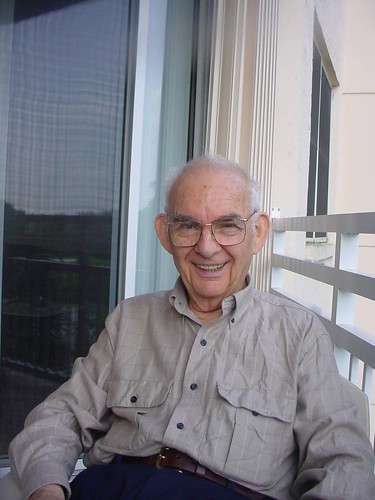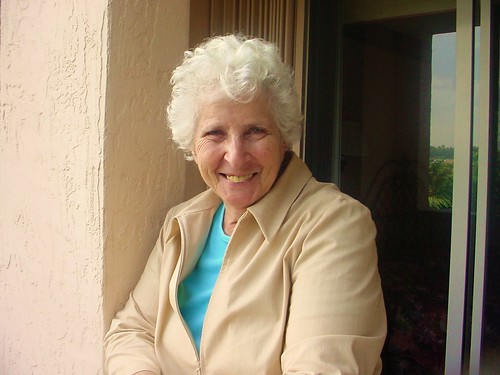In the first part of a two-part story, Mary Reinholz speaks with some former residents of Knickerbocker Village.
Although hard hit by Hurricane Sandy, Knickerbocker Village still looks like an urban fortress, with its aging collection of 13-story brick buildings spanning one full city block. As lower middle income residents once again consider the option of going co-op, it’s worth noting that this sprawling complex, a precursor to the Mitchell-Lama Housing Program, was once a hot bed of tenant activism and radical politics during the Depression era on the Lower East Side.
This was a time when the gangs of New York held sway in impoverished immigrant neighborhoods, and mobsters controlled the docks on the East River nearby. An infamous “lung block” on which the complex sits between the Manhattan and Brooklyn Bridges got its name because so many tenants there had died from tuberculosis in squalid living conditions.
“It used to be all alleys and tenements, the worst kind of tenements you can imagine,” said Hal Kanter, 83, a retired restaurateur and former owner of Manhattan’s Broadway Joe steak house who lived at Knickerbocker Village from 1935, a year after it opened, to 1948. “Knickerbocker Village cleaned all that up. I was a tot when it opened and it seemed so safe. It was like a prison–with walls and gates so high you couldn’t scale them.”
Author David Alman, 93, who grew up in a tenement on Rivington St., moved into KV in 1941, noting “It dwarfed anything we had ever seen before.” It struck him, he said, as a kind of working-class paradise. Some seven decades later, in 2009, he published a book with his late wife Emily Arrnow on an episode in KV history. It was called, “Exoneration: the Trial of Julius and Ethel Rosenberg, and Morton Sobell.“
The Rosenbergs, who were convicted for conspiring to pass atom bomb secrets to Russia, and executed at Sing Sing prison in 1953, remain Knickerbocker Village’s most notorious former tenants. Both were communists who had been living with their two young sons in a modestly priced apartment.
Mr. Alman remembers Knickerbocker Village tenants in the earlier years as mostly Democrats and Liberals with a” vocal minority” of radical leftists including socialists, communists “and variations like Trotskyites.” Mr. Alman himself had been a “devout anti-capitalist” as a son of a lower East side Jewish peddler who saw landlords routinely evict tenants on his block and throw their furnishings out on the street. (He joined the Communist Party at 18 and left at age 24.)
He also knew people in his old neighborhood who were involved in criminal gangs and wound up in prison or killed.
“When you grew up on the Lower East Side at that time, you knew the guys in the gangs and you knew about Murder Incorporated. It was common knowledge,” he said during a telephone conversation from his Florida home.”You knew that some of the guys you knew would wind up in the electric chair. On one occasion, I heard a woman in the street screaming and I was curious to know why. Her son was to be executed the next day. You grow up with things like that and it’s impossible not to be affected.”
A strong opponent of capital punishment, Mr. Alman recalls life as kinder and gentler at KV but knew little about Frederick Fillmore French, its flamboyant developer who grew up poor in the Bronx and had been dead for five years when the Almans moved in.
French had the “lung block” razed to make way for his ambitious project, which he scaled down to 1590 apartments, most of them one bedroom units. He had real estate brokers in dummy corporations buying up parcels before the crash of 1929. Two years before, his company reportedly began constructing the first of the dozen 13-story buildings that he hoped would attract junior Wall Street executives looking for their first homes.
To complete the project, French borrowed some $80 million from the Reconstruction Finance Corp. in Washington D.C., which was authorized to make loans on slum clearance projects during President Franklin Delano Roosevelt’s New Deal. When Knickerbocker Village first opened in 1934, its dedication ceremony drew Democratic Governor Al Smith and housing officials who hailed it as a model of cooperation between the public and private sectors to cure a block of urban blight. It was bounded by Catherine, Market, Cherry and Monroe Streets and surrounded two courtyards.
Every unit had wood parquet floors, refrigerators and tiled bathrooms. Rent was $12.50 a room, electricity included, a figure mandated by the RFC that turned out to be prohibitive to many tenants from the old “lung block” who were forced to move back to the slums.
Lower middle income tenants, who included lawyers, journalists and professors, found some of the conditions unacceptable and soon staged a rent strike. The Knickerbocker Village Tenants Association formed, playing an important part in New York City’s tenant rights movement. After a series of battles with the tenants, French died of a heart attack in 1936 at age 52, but his Fred F. French company maintained ownership for the next 40 years. Along the way, the complex drew residents like Mr. Alman who by then was working as a machinist for a tool and dye company during the start of World War II. Today he speaks with some awe of the amenities he experienced at KV and its communal spirit.
“First you had (self-service) elevators and that was a marvel then,” he said. “In the basements they had club rooms where people could play games like chess and board games. There were wood working rooms if you wanted to make furniture. It was a delightful place to be. There were political discussion groups in these little rooms. There were benches where you could sit on outside.”
For his part, Mr. Kanter remembers playing rough and tumble sports with the sons of KV tenants and kids he called “outsiders” from the rough neighborhoods nearby. “We had the playground right in the middle of all the buildings,” he said. “We had basketball courts, shuffleboard courts, stoops to play stoop ball. We played touch football on granite (pavement). Security was tight,” he noted. “They didn’t want the ‘outsiders’ to bring in any pipes or brass knuckles. But they were honorable and we would compete heavily with them and play stickball on their turf. The manhole covers were the bases. Somebody always came home with a concussion. If you didn’t break a foot or an arm, it wasn’t a good game.”
— To be continued tomorrow.







